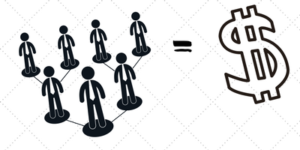In the early days of social media marketing, you could post virtually any piece of content and, realistically, expect to see engagement from about 15 to 20 percent of your followers, fans or friends — depending on the day and just how many were online at that time. Search engine algorithms were just as simple — spam some keywords, throw in a few pictures, gain some backlinks and your site would be ranking in no time.
However, as time went on, users began to demand more out of their resources because they wanted better answers to their questions. Algorithms continued to give the users exactly what they wanted, which is why we see so many algorithm shifts and shake-ups today, to make the experience more satisfying for actual humans.
How can we take advantage of these changes? In theory, it’s simple: create the best user experience. In practice, it’s a bit more labor intensive and requires a lot of creativity, testing and reporting.
How Google paved the way for UX-based algorithm changes
First, we have to reshape our philosophy on search engines, as a whole, if we want to accurately predict shifts in the search engine algorithm and capitalize on them. Google isn’t some evil genius, hellbent on forcing the little guys to do battle over crumbs while they give feast and favoritism to the conglomerates. It’s also not some pushover that can be nefariously manipulated to do your bidding.
Google search is the virtual manifestation of user experienced-based answers to questions. The algorithm acts as a ranking mechanism that rewards resources that provide a great experience for all users while penalizing those that either deliberately try to game the system through spammy techniques or drastically go against the general user consensus. In a sense, it is more human than human.
What has the search engine giant done in the past that has showcased its strength and willingness to put the user first?
- All the way back in November 2003, Google introduced the update named “Florida” that took direct aim at late ’90s spam tactics, like meta keyword stuffing.
- 2011 saw the introduction of “Panda” — a major algorithm update that penalized websites with low quality content and minimal word count.
- “Penguin” was introduced in 2012 and brought websites partaking in backlink farms and other links spam tactics to their knees.
- April 22, 2015, was the day “Mobilegeddon” was implemented, successfully promoting sites with great mobile experiences and punishing those that didn’t consider their mobile users.
- The Intrusive Interstitial Penalty hit the scene Jan. 10, 2017, and damaged the rankings of sites that used invasive pop-up ads that took up more than 50 percent of the screen and couldn’t be easily bypassed.
SEO: Less system manipulation, more user empathy
SEO (Search Engine Optimization) is a robust, ever-changing science. While search engine experts may know most, if not all, of the ranking factors, the weight of each is still up for debate and the subject of constant testing. But at the end of the day, think about what you’re doing with your website.
Are you making the user experience better for anyone or are you simply making edits because you think you can manipulate the system by appeasing the almighty Google machine? If you’re not adding value to the user, search engines will take notice and your rankings will take a hit. If you’re going above and beyond for all users, expect a reward.
Facebook marketing: Pay-to-play (but it’s a really great game)
Social media algorithms have changed shape in a similar fashion, but with a much less altruistic, more capitalistic tone. They have soured on the idea of an “open web” in favor of a more custom-tailored experience for each individual user.
Many modifications have been made to enhance user experience, but it would be unsound to dismiss advertising opportunities as a reason for the metamorphosis. Advertising has become a major component of Facebook, YouTube, Instagram and Twitter — pretty much every social platform except Snapchat. And as users continue to share, tweet and post, they are seeing increasingly more advertisements — but that’s not necessarily a bad thing. With the introduction of target audiences and retargeted marketing, ads have become more relevant to user interest. Ever wonder how that bracelet company created an ad for the exact model you were looking at and place it in your feed? Tracking pixels can be implemented into most websites to continue the marketing efforts. Not only are these personalized ads relevant to users, but they also increase the rate of conversion for marketing and e-commerce sites, as they have already reached their target demographic. Since 2014, organic reach-per-post has drastically decreased for Facebook businesses. Some companies watched as their average post reach would go from 16 percent of their total fan base down to 2 to 3 percent.
The social media Goliath stated that the reason for the decline was twofold — there was too much content being published already and Facebook was trying to feed more tailored content to its users. This is a great move for the consumer experience, but not so hot for the innovators and entrepreneurs.
How can businesses with small budgets compete?
What does this mean for the small business startup that doesn’t have a large marketing budget or for the mom-and-pop shop that isn’t so tech savvy? Is the ever-decreasing organic reach going to snuff them out?
Not exactly. These demographics must market more actively — post more often and at strategic times. They must test drive all the new Facebook features — live streaming video, messenger for businesses, call to action buttons — to get the most out of the platform without paying. Organizations must also be more selective with the content they publish.
Engagement is an algorithm factor and if you’re posting just to post, you’re wasting resources. Creating actionable posts that garner link clicks, image clicks, likes, comments and shares not only increase your overall organic reach, but also impact how often you show up in the feed of someone who has interacted with your post. They engaged with it, they liked it, why not show them related content from the same source? What types of posts get low organic views? Colossal walls of text, posts with no images, automated posts and posts that were created through third-party platforms see substantially lower organic reach.
The Facebook algorithm does not reward laziness. Rather it punishes apathetic publishing behavior and gives credence to the page that takes the extra time to create engaging content. Additionally, the opportunity to go viral will always remain free. Publish an exceptional concept and watch it spread like wildfire — for free.
It is important to stress that experimenting with boosted posts and other paid-for advertising can be a fruitful endeavor. As unpaid hits and clicks decline, more targeted clicks are made. Instead of spinning your wheels at full speed for free, you can take extra time to carve out a targeted advertising campaign, create a custom audience and market to only that desired demographic.
Think of it as putting up a peanut butter billboard on the road to the jelly and bread emporium — you have that much control.



















